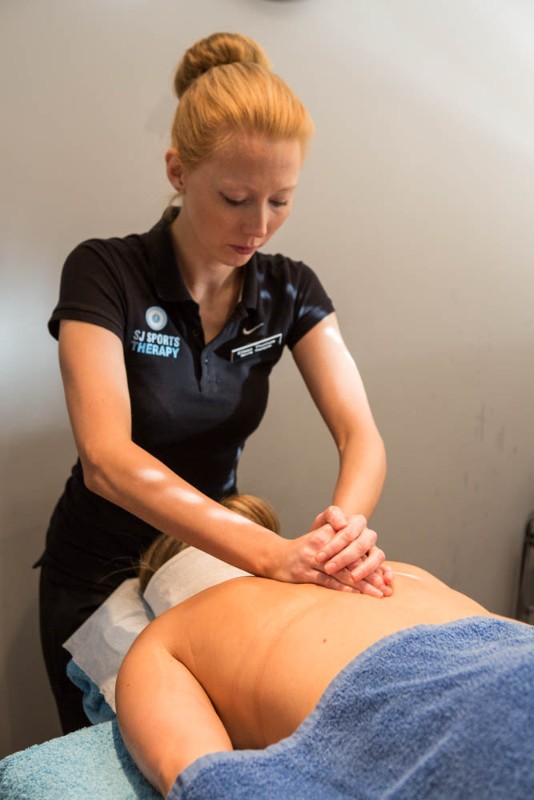
Sports Therapy is about putting into practice our knowledge to help improve health, fitness and sports performance. It involves the assessment of posture, movement, fitness and injuries followed by the application of accepted principles of training and treatment to help people achieve their objectives. Sports Therapy is tailored to each person and can benefit everyone in different ways. The most important part is finding out how it can help you specifically.
The Benefits of Sports Therapy are:
-
Improved sporting performance
-
Improved strength, power, flexibility, co-ordination and endurance
-
Improved speed of recovery from activity
-
Identification of individual strengths and weaknesses
-
Improvement of posture, body contours, body awareness and well-being
-
Improved functional fitness
-
Postural, biomechanical and gait (walking pattern) assessment
-
Treatment, prevention and rehabilitation of injuries
As experienced Sports therapists, we use a combination of a number of techniques to deliver these benefits depending upon the issues we find during an assessment and the goals of the client.
Techniques include:
-
Sports Massage:
Specific techniques are used to ease muscle tightness, improve muscle performance and promote the healing response. Often seen as a painful or uncomfortable massage, in fact a Sports Massage can be one of the most relaxing and uplifting massages you will receive.
-
Deep friction/ Deep Tissue work:
A technique used in Sports Massage to promote the healing response and to work on muscles that a therapeutic massage cannot penetrate.
-
Postural and Muscle Assessment:
Looking at body alignment then making suggestions and recommending exercises to straighten up and correct poor posture.
-
Myofascial release:
The Fascia is a connective tissue that gives muscle their shape, sometimes this can become tight and fibrous and can prevent full muscle contraction and mobility. Gentle techniques are used to release this and relieve any tightness.
-
Electrotherapy:
Various techniques exist for Electrotherapy; Ultrasound being the most popular for a Sports Therapist to use. Ultrasound uses sound waves to penetrate the affected area that the Therapist cannot manually reach, promoting the healing response.
-
Accupressure:
A technique used during Sports Massage which requires the application of pressure to ?trigger points? i.e. specific areas that cause pain and can refer pain to another area of the body. Often this is the most effective technique used on people who participate in heavy training sessions or people that have regular headaches.
-
Mobilisations and Traction techniques:
Gentle techniques used to realign the spine, increase the range of movement in a joint and lengthen muscles. Often clients walk out of a session feeling several inches taller.
One of the greatest benefits of Sports Therapy is help dealing with the side effects of training. Have you ever experienced any of the following during or after training?
-
Aching, Sore, Heavy Muscles
-
Tender/Tight shoulders and neck
-
Headaches
-
Twitchy/restless legs
-
Swelling to muscles/joints
-
Decreased flexibility
-
Injuries
-
Generally feeling tired or just plain knackered!
Obviously there could be various causes for the above, but these are also some of the common side-effects from specific training regimes. They can all be reduced and, in some cases, alleviated. It depends on our body?s natural healing response and efficiency. Everyone is different and our genetic make up is unique; some people heal quicker than others and some just need a little extra help to speed up the process ... This is where Sports Therapy can help!
If you are interested is Sports Therapy or Sports Massage and would like to book a complementary consultation, please contact us on 01789 450141.
